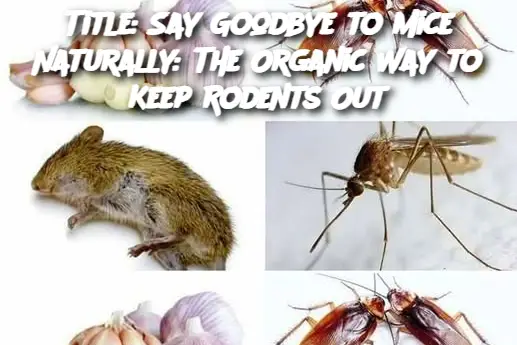-
Peppermint Oil Soak:
-
Soak cotton balls in peppermint essential oil and place them near entry points, under sinks, behind appliances, and in pantry corners.
-
Refresh every 5–7 days for continued effectiveness. Mice dislike the strong scent, which interferes with their sense of smell.
-
-
Clove & Bay Leaf Sachets:
-
Fill small sachet bags with whole cloves or dried bay leaves and place them in drawers, cupboards, or along baseboards. These herbs have strong aromas that naturally repel rodents.
-
-
Vinegar Spray:
-
Mix equal parts of white vinegar and water in a spray bottle. Spritz around baseboards, window sills, and suspected entry points.
-
The acidic scent helps mask food odors and deters mice from coming near.
-
-
Seal Gaps with Steel Wool:
-
Mice can squeeze through tiny cracks. Use steel wool and caulk to block entry holes around pipes, vents, and walls. They cannot chew through steel wool.
-
-
Baking Soda Trap (Non-Toxic but Lethal):
-
If needed, mix baking soda with a little peanut butter and place small amounts in shallow dishes near mouse activity areas. Baking soda reacts with stomach acid, which mice can’t tolerate.
-
Use caution with this method if you have pets.
-
Serving and Storage Tips (Keeping the Remedies Fresh and Effective):
-
Store Essential Oils in Cool, Dark Places: This preserves potency.
-
Replace Cotton Balls Weekly: Refresh the scent to keep it effective.
-
Clean Areas Before Applying Repellents: Remove any crumbs or spills that could attract mice before applying natural deterrents.
-
Keep Repellents Out of Reach of Pets and Children: Especially those using strong oils or baking soda.
Variants (Other Natural Methods to Consider):
-
Used Cat Litter (Outdoors Only): The scent of a predator can scare mice away—just place a small container near outdoor entry points (not inside due to odor).
-
Onion or Garlic Cloves: Their strong smell can repel mice when placed in problem areas (but replace regularly and keep out of food zones).
-
Ultrasonic Repellents: Plug-in devices emit high-frequency sounds that are unpleasant for mice but inaudible to humans. Choose chemical-free versions.
-
Cedarwood or Tea Tree Oil: Other effective essential oils that can be used the same way as peppermint.
FAQ:
Q: Do natural repellents work as well as chemical ones?
A: When used consistently and combined with good cleaning habits and sealing entry points, natural methods can be very effective at preventing infestations.
Q: How often should I replace peppermint oil cotton balls?
A: Every 5–7 days or whenever the scent fades. The stronger the aroma, the more effective it is as a deterrent.
Q: Is it safe to use these remedies with pets in the home?
A: Most are pet-safe when used properly, but keep essential oils and baking soda out of reach of pets, as ingestion may be harmful.
Q: What’s the best way to find out where mice are coming from?
A: Look for droppings, chew marks, or small holes near walls, baseboards, cabinets, and entryways. Use flour or baby powder dusting to track movement.
Q: Can I use more than one method at once?
A: Absolutely! In fact, combining several natural repellents with good sanitation and sealing of entry points gives you the best long-term results.
Conclusion:
You don’t need to turn to toxic chemicals to solve a mouse problem. Nature provides plenty of effective, safe alternatives that not only protect your home but also preserve your health and environment. With consistency, a little creativity, and a few natural ingredients, your home can stay rodent-free—organically
